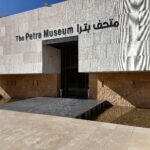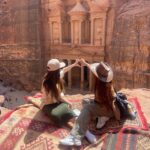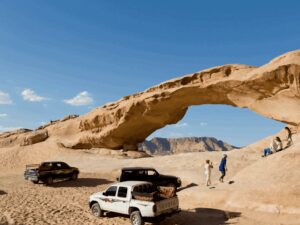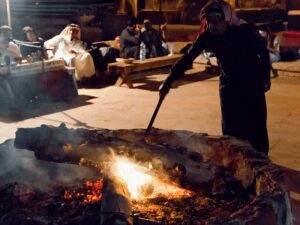Petra, a UNESCO World Heritage Site, is celebrated for its stunning archaeological wonders, with the Petra Monastery (Ad-Deir) standing out as one of its most remarkable attractions. Carved into the rose-red cliffs of southern Jordan, this ancient structure offers a unique glimpse into the rich history of the Nabataean civilization.
Highlights of Petra Monastery
- Monastery Overview: The Petra Monastery is an impressive edifice carved from sandstone, showcasing the architectural prowess of the Nabataeans. It is believed to have been used as a tomb or mausoleum rather than a monastery.
- Interior Exploration: Visitors can enter the Monastery to view its spacious chamber, adorned with intricate carvings and chambers likely used for religious ceremonies.
Frequently Asked Questions (FAQs)
- Can You Go Inside the Monastery in Petra?
- Yes, visitors can enter the Petra Monastery and explore its interior, which includes a large central chamber and various carved niches.
- How Long is the Walk to Petra Monastery?
- The walk from Petra’s main entrance to the Monastery typically takes 45 minutes to 1.5 hours, depending on your pace. The route includes a scenic trek through the Siq canyon and an ascent up a series of steps.
- What Was the Monastery Used For in Petra?
- The Monastery is believed to have functioned as a Nabataean tomb or mausoleum. Its primary purpose was likely to honor a notable figure or serve as a sacred site for ceremonial use.
- How Many Steps is the Monastery in Petra?
- Reaching the Monastery involves climbing approximately 800 steps. The climb is challenging but rewards visitors with spectacular panoramic views of the surrounding landscapes.
- Is the Monastery in Petra Worth It?
- Absolutely. The Monastery’s grandeur and the serene environment make it a worthwhile destination. Its location offers a quieter experience compared to the more frequently visited Treasury.
- Can You Enter Petra Without a Guide?
- Yes, visitors can explore Petra independently. However, a guide can provide valuable insights and historical context, enriching your visit.
- Do I Need Cash in Petra?
- It’s advisable to carry cash for entry tickets, souvenirs, and local purchases. Credit card facilities may be limited within the archaeological site.
- What to Wear When Visiting Petra?
- Wear comfortable clothing suitable for walking and hiking, along with sturdy footwear. Dressing modestly is recommended, especially when visiting religious or culturally sensitive sites like the Monastery.
- What to Do at the Monastery?
- Enjoy the Monastery’s impressive facade and the stunning views from its vantage point. Relax at nearby cafes, interact with local Bedouin vendors, and appreciate the surrounding natural beauty.
- Can I Stay in a Monastery for Free?
- Typically, staying in a monastery requires prior arrangements and may involve a contribution. Such stays offer a unique cultural experience, though they are not commonly available at Petra’s Monastery itself.
- What Do You Eat at a Monastery?
- Meals at monasteries are usually simple and vegetarian, prepared by resident monks or staff. Dining arrangements often emphasize communal eating and reflection.
- How to Behave in a Monastery?
- Maintain a respectful demeanor by adhering to any guidelines provided. Keep noise levels low, dress modestly, and embrace the tranquil atmosphere.
Conclusion
Exploring the Petra Monastery offers a profound journey into Jordan’s ancient past, blending architectural splendor with historical significance. Whether you navigate Petra’s paths independently or with a guide, the Monastery promises a memorable and enriching experience. Embrace the beauty and history of Petra, and let the Monastery’s grandeur enhance your visit to this extraordinary site.








